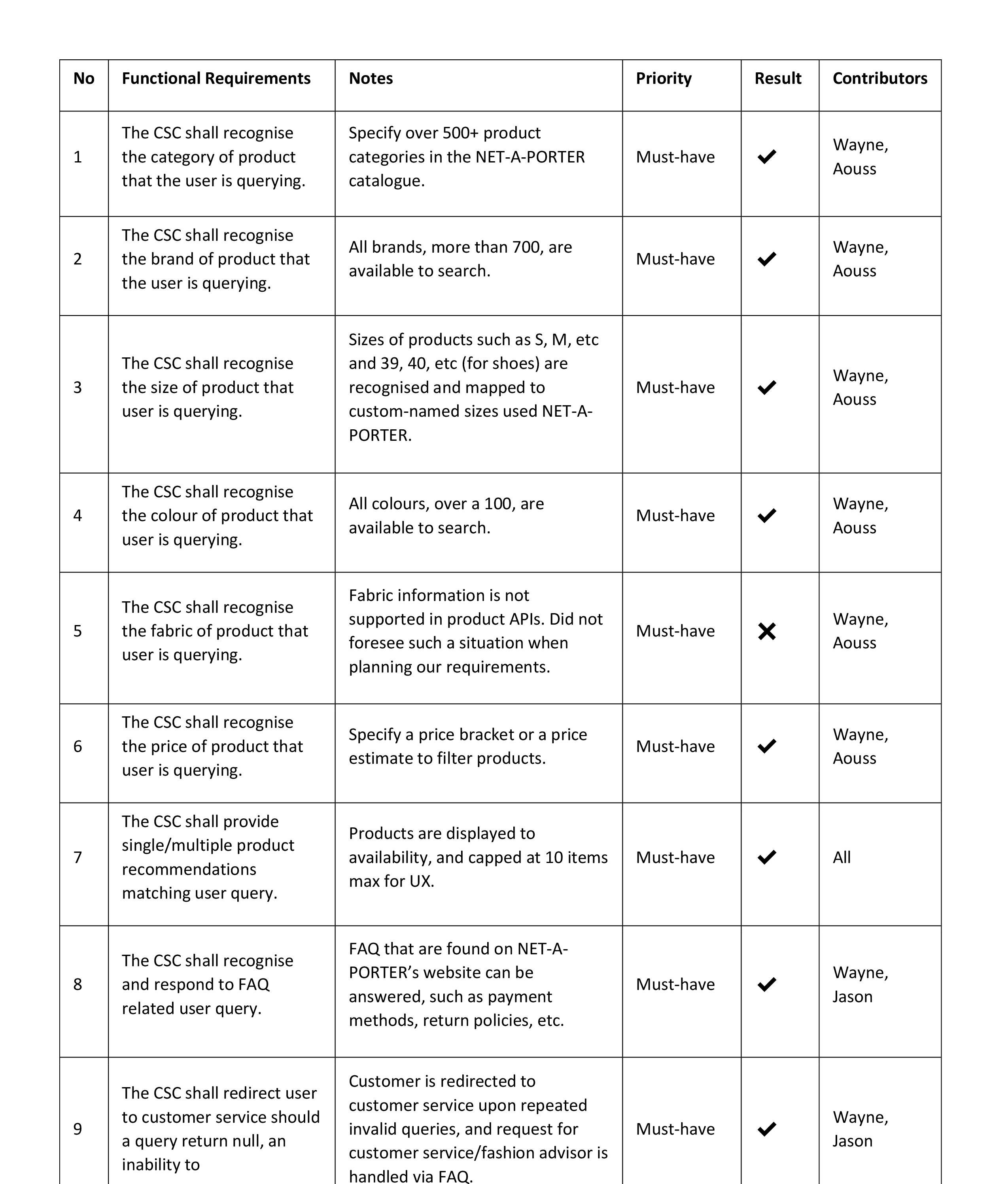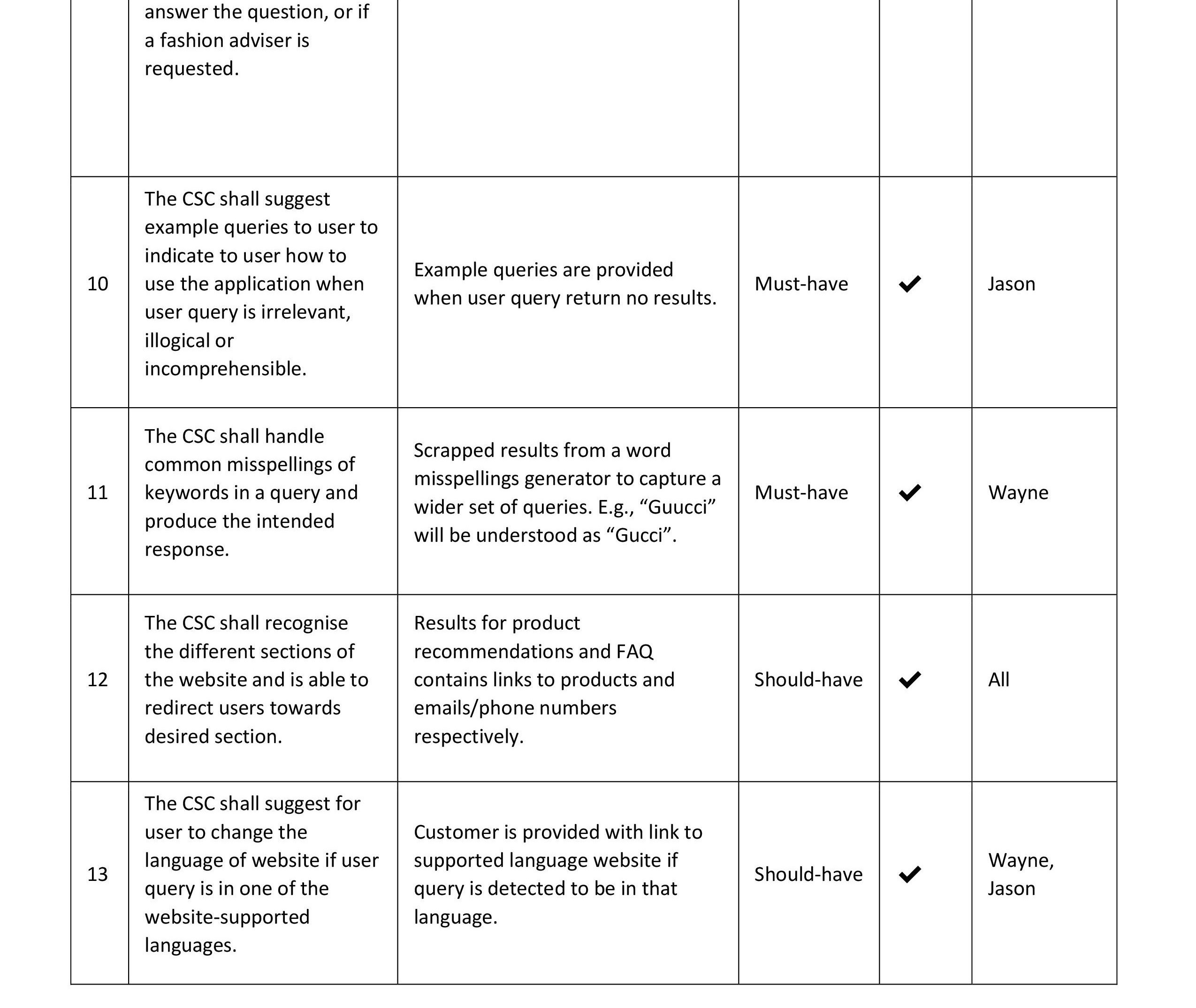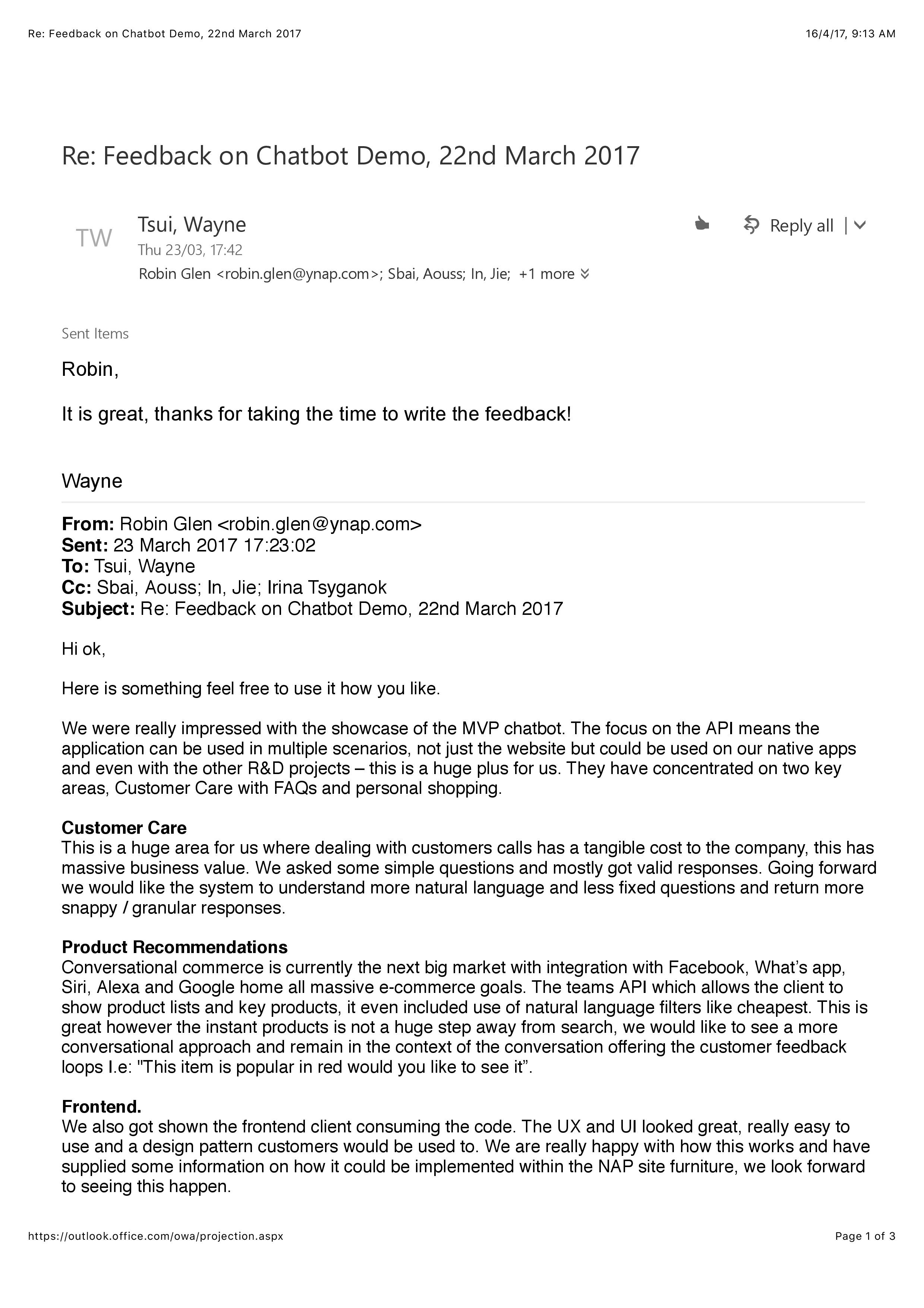NAP
Review of Development Plan
-
Front End
We iterated over 3 main sections in developing the front-end.
Firstly, we planned to have the chatbot interface be very much like a messaging platform, that users are very familiar with, given the popularity of texting apps such as Facebook Messenger, WhatsApp, etc. This led to decisions such as having the feature to minimise the chat interface, refresh chat conversations and as an attachment to the NET-A-PORTER website.
Secondly, we experimented with the display of results from product recommendations. Initially, we decided to return results with a single item on view, and users can click on left and right buttons to view other items as part of the results returned. However, we thought it was not an intuitive experience. Therefore, we decided to change it and output the products all at once, and users can scroll to view the products.
Lastly, we tried different combinations of product data that would be ideal to display on the chatbot interface for each of the product results. We realised that data such as size fit and categories were not important to include and will clutter the interface. Ultimately, we went with product name, description and price as information to be attached to each product. Each product also has a large standardised image that will link to the product page.
-
REST API
The chatbot service is wrapped in a REST API that can be used across different platforms, and as an example we built the web app to showcase the features of the API. We did not have the initial idea to build an API, and it is only after consultation with Dr Harry Strange (Managing lecturer for NET-A-PORTER teams) and our client that an API will provide a lot of benefit to allow our work to be extended by other NET-A-PORTER teams.
For the Product Recommendation feature, our team explored the use of a to-and-fro process to gather specific information for a user query. For example, a user can ask for a dress, and the chatbot will ask for colour, so on and so forth until all filters are decided. However, upon review from our client’s upper management, we came to a consensus that we should reduce the time-to-product, meaning that users should see the products as quickly as possible. Therefore, we scrapped the filtering process and allowed the user to specify all available filters (brand, colour, size, etc) and return products upon a single query.
For the FAQ feature, the plan was to use intents to know that user is asking for such information and to extract key details using entities. However, we went with that approach and found out that it is not a viable method. These entities will be hard to maintain because the FAQ information are static on the website and there are no APIs to retrieve them. Upon further research, we discovered Watson’s Retrieve and Rank and Document Conversation service which is ideal for our purposes as it is based on using a knowledge base (FAQ information) and a question pool (FAQ questions) which can be added on and extended over time.
Project Maintainability
One of the key development goals of this project is to ensure that the chatbot is maintainable. This is especially important as NET-A-PORTER is a fashion company, and product catalogues are constantly updated with new items. This means that changes to their database should not require a lot of manual updates on our chatbot API.
To handle such a challenge, we separated the concerns of the application using a variety of services that can be individually maintained without affecting other components in the system. For example, Watson’s Conversation is used to process user messages, Language Translator is targetted at language recognition, Retrieve and Rank is targetted at FAQ intents, Amazon Web Services (AWS) API Gateway and Lambda is for wrapping the code and providing an endpoint for the front-end, etc.
In addition, we wrote scripts to populate most of the entities in the Watson Conversation service to minimise hard-coding. For example, product categories, brands, colours are entities which are commonly updated for the fashion company. Scripts are written to extract their API’s response to convert from JSON to CSV to populate into the Conversation workspace. Entity misspellings are scripted to scrap results from an online typo generator. When NET-A-PORTER updates their product catalogue, we do not have to manually change our Conversation workspace, and would just need to rerun the scripts to populate the updated data.
Summary of Achievements
Our team related our achievements to whether we delivered the MoSCoW requirements. The following 2 tables show the functional and non-functional requirements and its details. Each table contains the requirement specifications, notes on success/failure, priority (Must-have/Should-have), if it has been achieved, and the contributors for each requirement.



